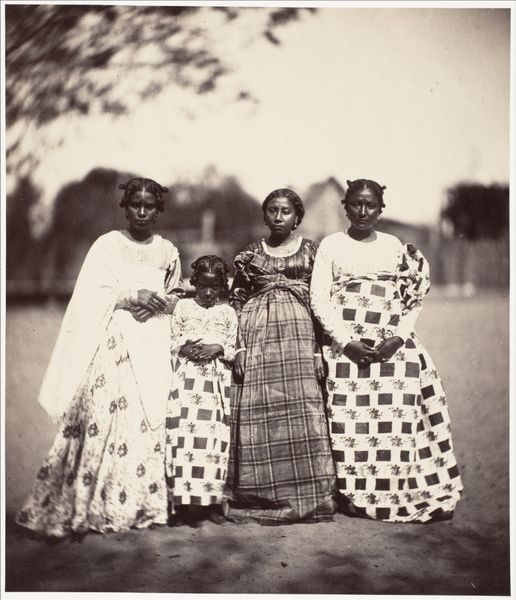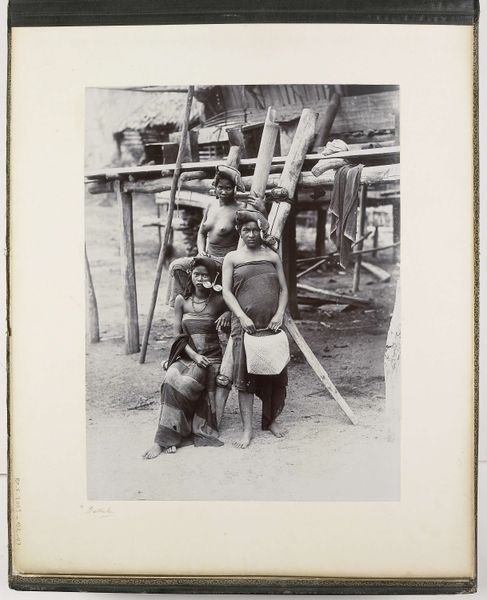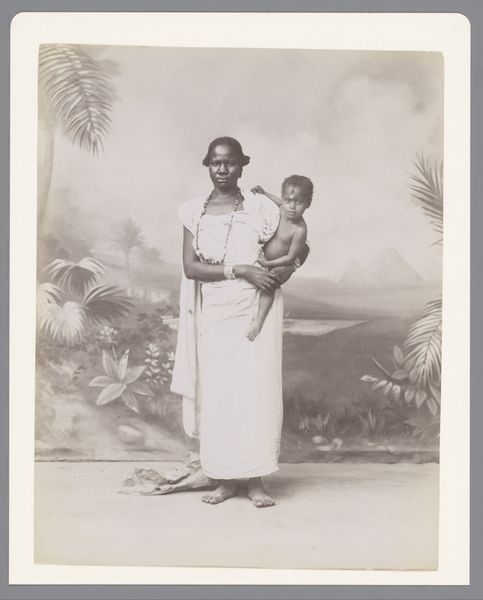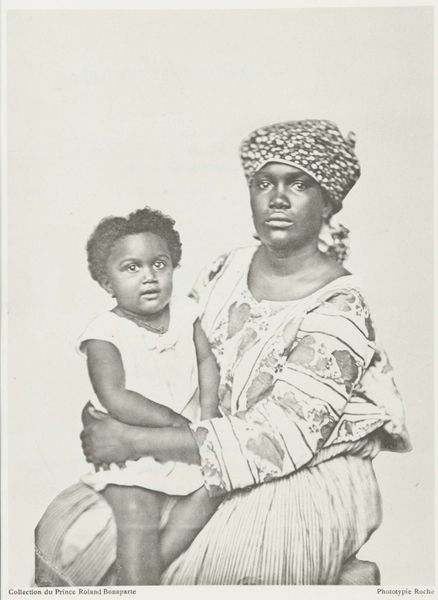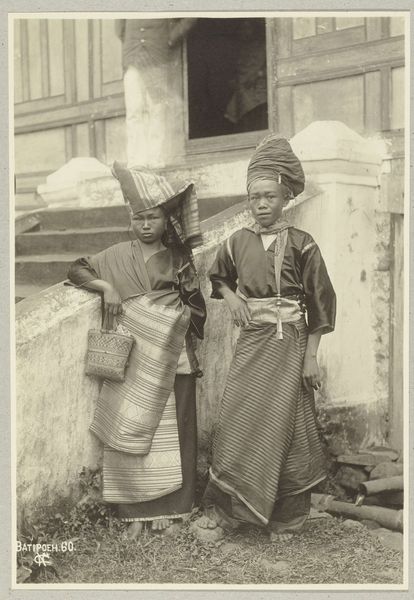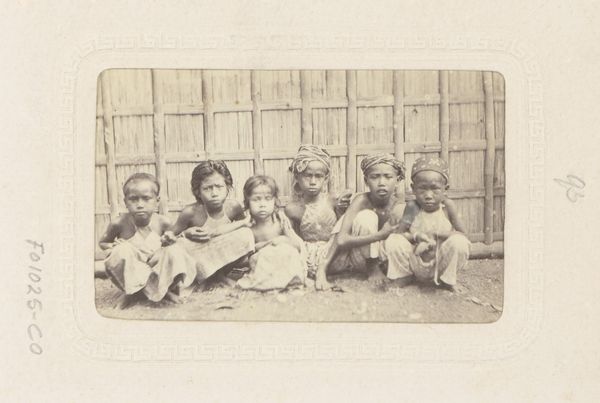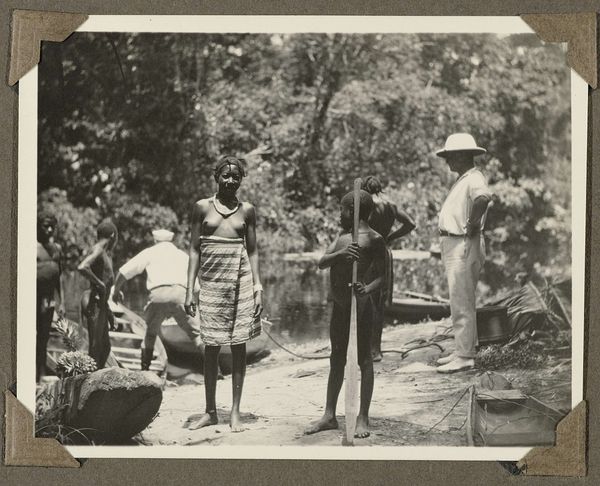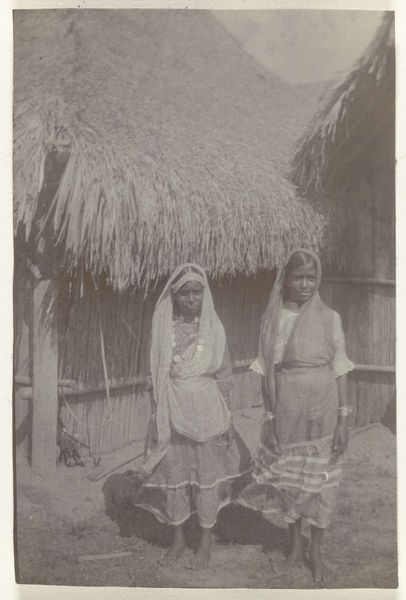
mixed-media, photography, gelatin-silver-print
#
portrait
#
mixed-media
#
landscape
#
indigenism
#
photography
#
gelatin-silver-print
Dimensions: height 237 mm, width 155 mm
Copyright: Rijks Museum: Open Domain
Curator: Welcome to this remarkable portrait, captured in 1912, known as "Portret van een vrouw met kind in Nederlands-Indië," or "Portrait of a Woman with Child in the Dutch East Indies." The mixed-media, gelatin-silver print comes to us from the hand of Onnes Kurkdjian. Editor: There's an arresting stillness about this image, even though the backdrop suggests a tropical abundance. The soft greys and delicate shadows lend a kind of quiet dignity to the mother and child. Curator: Exactly. It's important to contextualize photography like this within the broader scope of colonialism. Kurkdjian was documenting a specific perspective, framing the local population for a Western audience. Editor: Which immediately raises questions about power, doesn't it? Who controlled the gaze? And how were indigenous people being represented – were they exoticized, perhaps romanticized, in a way that served the colonial narrative? The setting looks almost staged, and yet... Curator: And yet, there is a sense of genuine connection between mother and child that resists easy reduction. Indigenism as an artistic and political style also romanticized native subjects to create nationalist feelings, however these photographic works helped that end. Editor: True. Their gaze is so direct. They're engaging with us, but on their own terms, it feels. The soft focus on the surrounding landscape reinforces this sense of intimacy. It makes one consider how we consume and interpret images from vastly different cultural and historical contexts. I’m drawn in but also wary of my own presumptions. Curator: I share your concern. Photos such as this contributed to creating public perception, and these perceptions led to the policies around colonization at the time. Editor: The child’s direct stare holds the complexity, really. A mother’s love made timeless by photographic preservation. The landscape that would have served as a beautiful exotic backdrop actually provides us a framework for thought about mother and child as subject matter. Curator: Precisely. It reminds us of the intricate ways power and identity intersect and the value in re-examining art and imagery of the past. Editor: Ultimately, looking closely at Kurkdjian's piece asks us to consider the ethics of representation and the responsibility we have as viewers.
Comments
No comments
Be the first to comment and join the conversation on the ultimate creative platform.

